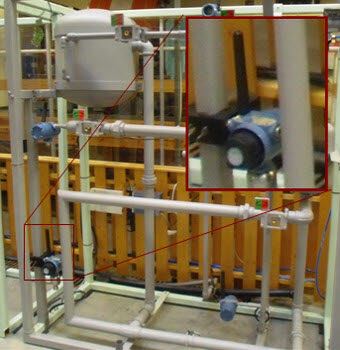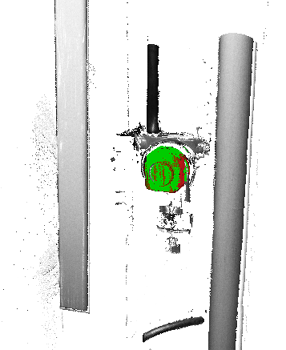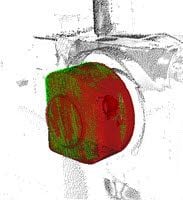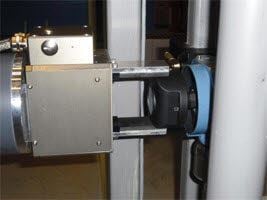One example of a maintenance task that has been demonstrated in the lab is to change the battery of a sensor with a robot. Since we cannot assume that the accurate position of the sensor is known in advance, the robot has been equipped with 3D vision based on structured light
Advanced 3D object recognition techniques are used to detect the position and orientation of the battery based on a 3D image of the process equipment and a CAD model of the battery.

|

|
The image above to the left shows the process equipment with a magnified image of the sensor battery that we want to change. The image to the right displays a 3D scan of this area captured by a structured light instrument on the robot. 3D points that are found to reside on the surface of the battery are indicated in green, while the detected battery has been annontated in red on the 3D image.

|

|
Left: A magnified region of the 3D image with measured points on the surface of the battery indicated in green. The CAD model of the battery is annotated in red in the detected position and orientation. Right: The position and orientation of the battery is sent to a robot with a suitable gripper tool, which is instructed to replace the battery with a new one.